Product Description
| Product Parameter | |||||
| Motor Output (W) | 100 | Rated Dynamic Load | Fy(N) | 120 | |
| Rated Torque (Nm) | 0.32 | FZ(N) | 250 | ||
| Ball Screw Level | C7 | Mx(N.m) | 115 | ||
| Repeated Accuracy (mm) | ±0.01 | My(N.m) | 80 | ||
| Ball Screw Spec | Ø10 | 02 | Mz(N.m) | 80 | |
| Rated Thrust (N) | 512 | Second Moment of Area | Lxx(cm4) | 1.8 | |
| Maximum speed (mm/s) | 100 | Lyy(cm4) | 11.6 | ||
| Stroke Range (mm) | 50~500 | Basic Weight for 0 mm stroke | 1.15 | ||
| Maximum Load (Kg) | Horizontal | 25 | |||
| SideMount | 12 | Additional Weight per 100mm stroke | 0.5 | ||
| Vertical | 8 | Optical Sensor | SY-307NA-W | ||
| Stroke (mm) | 50 | 100 | 150 | 200 | 250 | 300 | 350 | 400 | 450 | 500 |
| L | 246 | 296 | 346 | 396 | 446 | 496 | 546 | 596 | 646 | 696 |
| A | 25 | 75 | 25 | 75 | 25 | 75 | 25 | 75 | 25 | 75 |
| M | 1 | 1 | 2 | 2 | 3 | 3 | 4 | 4 | 5 | 5 |
| N | 6 | 6 | 8 | 8 | 10 | 10 | 12 | 12 | 14 | 14 |
| P | 25 | 75 | 125 | 175 | 225 | 275 | 325 | 375 | 425 | 475 |
| Weight (Kg) | 1.36 | 1.61 | 1.86 | 2.11 | 2.35 | 2.6 | 2.85 | 3.1 | 3.34 | 3.59 |
| Stroke (mm) | 50 | 100 | 150 | 200 | 250 | 300 | 350 | 400 | 450 | 500 |
| L | 246 | 296 | 346 | 396 | 446 | 496 | 546 | 596 | 646 | 696 |
| A | 25 | 75 | 25 | 75 | 25 | 75 | 25 | 75 | 25 | 75 |
| M | 0 | 0 | 1 | 1 | 2 | 2 | 3 | 3 | 4 | 4 |
| N | 4 | 4 | 6 | 6 | 8 | 8 | 10 | 10 | 12 | 12 |
| P | 25 | 75 | 125 | 175 | 225 | 275 | 325 | 375 | 425 | 475 |
| Weight (Kg) | 1.66 | 1.91 | 2.16 | 2.4 | 2.65 | 2.9 | 3.14 | 3.39 | 3.64 | 3.89 |
| Stroke (mm) | 50 | 100 | 150 | 200 | 250 | 300 | 350 | 400 | 450 | 500 |
| L | 246 | 296 | 346 | 396 | 446 | 496 | 546 | 596 | 646 | 696 |
| A | 25 | 75 | 25 | 75 | 25 | 75 | 25 | 75 | 25 | 75 |
| M | 1 | 1 | 2 | 2 | 3 | 3 | 4 | 4 | 5 | 5 |
| N | 6 | 6 | 8 | 8 | 10 | 10 | 12 | 12 | 14 | 14 |
| P | 25 | 75 | 125 | 175 | 225 | 275 | 325 | 375 | 425 | 475 |
| Weight (Kg) | 1.66 | 1.91 | 2.16 | 2.4 | 2.65 | 2.9 | 3.14 | 3.39 | 3.64 | 3.89 |
| Stroke (mm) | 50 | 100 | 150 | 200 | 250 | 300 | 350 | 400 | 450 | 500 |
| L | 246 | 296 | 346 | 396 | 446 | 496 | 546 | 596 | 646 | 696 |
| A | 25 | 75 | 25 | 75 | 25 | 75 | 25 | 75 | 25 | 75 |
| M | 1 | 1 | 2 | 2 | 3 | 3 | 4 | 4 | 5 | 5 |
| N | 6 | 6 | 8 | 8 | 10 | 10 | 12 | 12 | 14 | 14 |
| P | 25 | 75 | 125 | 175 | 225 | 275 | 325 | 375 | 425 | 475 |
| Weight (Kg) | 1.66 | 1.91 | 2.16 | 2.4 | 2.65 | 2.9 | 3.14 | 3.39 | 3.64 | 3.89 |
| Width: | 44mm |
|---|---|
| Max Stroke: | 800mm |
| Max Payload: | 25kg |
| Applications: | Precision Industry, Semiconductor, Optical, Laser |
| Transport Package: | Carton Box |
| Specification: | Aluminum |
| Customization: |
Available
| Customized Request |
|---|
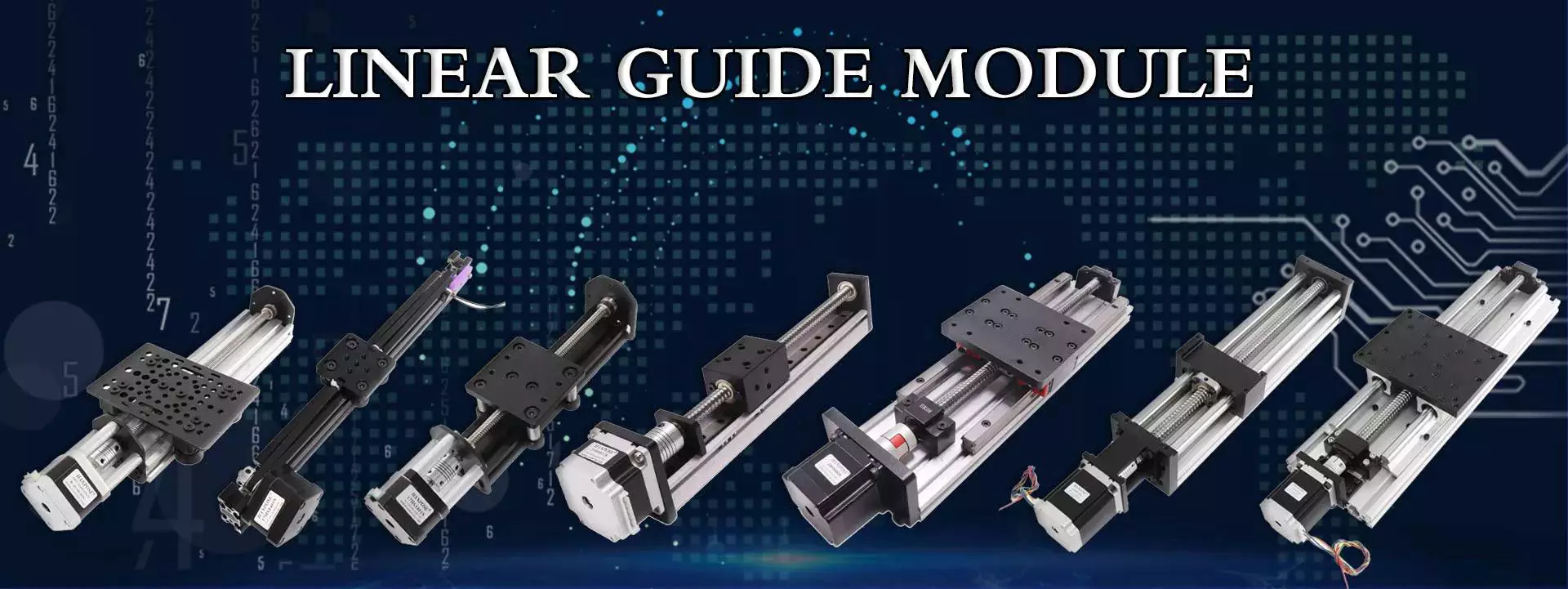
Using a “Traditional” Linear Rail in a 3D Printer Build
Using a “traditional” linear rail in a 3D printer build is a great way to add a bit of extra strength to your printer’s frame, but it comes with a few drawbacks. The following article will explain some of the reasons you might want to consider a sliding carriage and rail instead.
Applications
Basically, a Linear Rail System is a piece of mechanical equipment designed to sustain the motion of equipment. The system uses a combination of linear guides and bearings to maintain a steady motion.
The linear rail system is used in many industries, from manufacturing to transportation. It is important to design the system to suit the intended application. Some of the most common applications include material transfer, medical sample handling and factory automation.
The most common type of linear rail is the recirculating ball guide. Recirculating ball guides offer many advantages, including moment control, high load capacity and precision. However, there are limitations in some applications.
In the food and beverage industry, special linear bearings are necessary to handle harsh conditions and to meet health and safety standards. Some applications include weighing machines, pick and place modules, and packaging systems.
Linear rails also require precision mounting surfaces to ensure accurate motion. They are available in various lengths and are suitable for most applications.
A linear rail system can be used horizontally or vertically. They provide a smooth motion, reducing friction and minimizing wear. Linear Rail Systems can support loads ranging from a few grams to thousands of kilograms. The rail itself is made from high-strength steel and can be galvanised for added durability.
Linear Rail Systems can be used in a wide variety of industries, from pharmaceutical manufacturing to semiconductor manufacturing. The systems are easy to install and have a heavy load bearing capacity. They provide high stiffness and load capacity, and are perfect for moving loads with minimal friction. These systems also have low frictional resistance, which is important in pneumatic-driven systems.
There are several other advantages to using linear rails, including low cost, high load capacity, low friction and low maintenance. The rails are made from stainless steel or carbon steel.
CZPT linear guide rails
CZPT has a full lineup of linear guide rails, slides, and carriages to suit almost any application. Whether you’re assembling a high tech medical instrumentation system or automating your garage, CZPT has the equipment to get the job done. The company offers a wide selection of linear motion equipment ranging from mountable linear bearings to miniature guide rail and carriage assemblies.
The company also offers a full range of linear guide rails and carriages from high strength steel to high tech aluminum. The company’s extensive selection of linear motion products can be accessed through its convenient online ordering system. It also has a number of useful guides to help you choose the best equipment for your needs.
CZPT’s line of linear guide rails and carriages also includes space saving miniature guide rail and carriage assemblies. With a product lineup boasting over 500 linear motion devices, the company has something for just about every budget and need. CZPT’s line of linear guide systems is engineered to ensure maximum efficiency and reliability in an array of applications. CZPT’s linear guide products are the best in the industry. A CZPT linear guide can stand up to tearing loads and torque forces. Its superior performance can be maintained in a clean environment with proper maintenance. A well maintained rail can last for many years.
CZPT has a number of eminently sexy linear guide and carriage solutions to suit any application. You can browse by manufacturer or category to find what you’re looking for. From drilled and undrilled linear rails to carriages to linear guide slides, CZPT can help you make your next project a success. The company offers the best prices in the business and its products are made in the United States and Canada.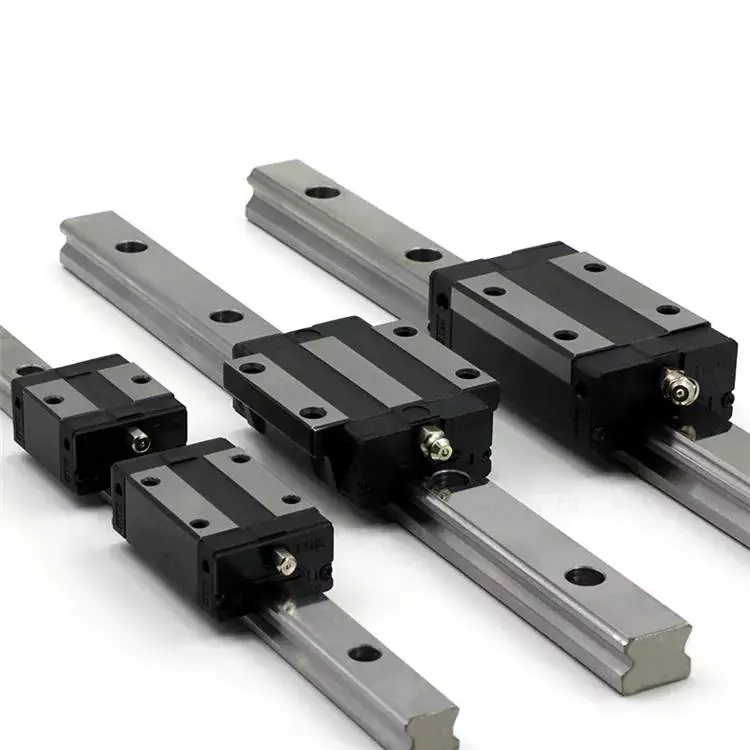
Sliding carriage and rail
Whether you’re looking for a new or used linear carriage and rail, there are a few things to keep in mind. For instance, you’ll need to choose a sturdy base material, like granite or steel, that can withstand the weight of the load. In addition, you’ll need to secure the linear components to the base.
Also, you’ll need a control system to regulate the carriage’s motion. These systems can be controlled by operator controls or feedback signals from sensors. If your application calls for a heavy load, you might want to consider a profiled rail.
Another option is a sleeve bearing slide. These slides are designed to be simple to operate, but they are not as durable as other slides.
A sleeve bearing slide is typically used in light-weight applications. It can be made of a variety of materials, including aluminum, steel, or stainless steel. These slides can have a ball screw drive and a linear motor.
These slides can also have rolling element bearings. These balls are used to support the load in the carriage. This decreases friction and provides a smoother motion.
In addition, these slides can be lubricated. You can find these slides in a variety of designs, including recirculating and non-recirculating. In non-recirculating designs, the rolling elements travel at half the speed of the carriage. In recirculating designs, the rolling elements follow the carriage’s looped course.
Some linear guides offer a variety of materials, including stainless steel, aluminum, and granite. These materials can be customized to match your needs. Some may also have custom-engineered features, such as a rail and bearing system, stage, and drive units. If you’re looking for a cost-effective solution, you may want to consider a custom-engineered linear slide.
Robot transport units
Adding linear movement to a Robot system is an effective way to enhance a Robot’s performance. The robot can now move larger and heavier workpieces to and from different machines, and to increase its utility. Adding linear movement also increases the number of activities that can be performed. This increases the robot’s throughput and helps to maximize the return on investment.
The Robot Transfer Unit (RTU) is an effective solution for adding linear movement to Robot systems. It increases the efficiency of 6-axis robots by allowing them to move workpieces along a moving conveyor line. RTUs are used in material handling applications such as welding, painting, inspection, and palletizing.
Robot Transfer Units can be floor-mounted, or raised above operations or the floor. This increases worker freedom of movement, while allowing for improved access to machinery by maintenance personnel. They also save floor space and can allow materials to be moved closer to the work area.
RTUs are used to carry robots between work stations and in material-handling applications. They are generally floor-mounted or can be elevated to save floor space and provide a view of the operation.
A typical RTU will include two workpiece transport units. Each workpiece transport unit includes a robotic arm, a guide rail, and a slidably mounted arm. Each workpiece transport unit also includes an electromagnet that propels the unit along the guide rail. The arm can rotate or “flip” about a horizontal axis (R) and the end effector can hold wafers (W) or rotate about a vertical axis (Z 2).
Each transport unit has a lateral outside dimension 640. This allows the unit to be slidably mounted on both sides of the guide rail structure.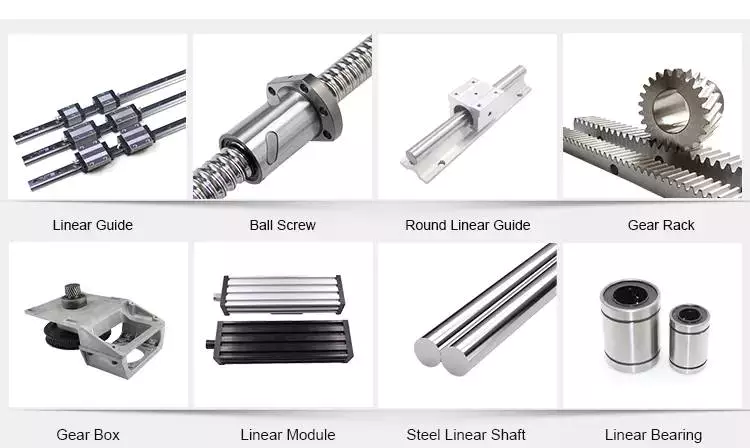
Drawbacks of using “traditional” linear rail in a 3D printer build
Using a traditional linear rail in a 3D printer build isn’t for the faint of heart. If you’re building a printer for your own personal use, it’s likely you’ll have to do a bit of tinkering to get the machine working as it should. Luckily, there are many alternatives to the conventional build process. For example, you can build a machine with an aluminum extrusion instead of using the traditional molten plastic. This allows you to print a wider range of materials and improves the machine’s longevity. Alternatively, you could use an aluminum extrusion with a delrin wheel for improved print quality.
You could also build a 3D printer from scratch with a custom frame made from aluminum. The material is a good choice if you’re looking to print large format items. The material is also lightweight, which translates into improved print quality and a smoother print experience. Using an aluminum extrusion for the frame of a 3D printer could save you some serious cash, if you know what you’re doing.
It’s a good idea to do your homework before making a purchase. The best way to avoid getting ripped off is to find a reputable manufacturer and check the credentials of the company’s products. This is especially true if you’re looking to buy a machine that can be used to build 3D models of your own designs. As with anything, buying the wrong printer for the wrong application can lead to disaster. Thankfully, you can avoid some of the pitfalls with a little research and a few recommendations. If you’re looking to build the machine of your dreams, take the time to learn what you’re doing first.

editor by CX 2023-05-22
China Rxs-42 Xy Table Gantry Linear Module Robotic Arm Rod Ball Screw Guide Sliding Table Motion Rail Actuator Motorized Router supplier
Product Description
Buy Instruction:
About product:
Remember to make contact with client service prior to putting the get to confirm the requirements and designs of the module,so as not to cause inconvence.
About Customization:
Customization demands deposit. For information, remember to contact buyer support. Customized products are not refundable after sold.
About Shipping:
Shipping and delivery of standard merchandise is scheduled in 7 times and non-stangard customized goods are scheduled inside of 30 days.
|
US $420-730 / Piece | |
1 Piece (Min. Order) |
###
| Feature: | Vacuum, Magnetically, Low Temperature, High Temperature, High Speed |
|---|---|
| Function: | Super |
| Flange Shape: | Cutting-Edge |
| Shape: | Open |
| Series: | LM |
| Material: | Stainless Steel |
###
| Customization: |
Available
|
|---|
|
US $420-730 / Piece | |
1 Piece (Min. Order) |
###
| Feature: | Vacuum, Magnetically, Low Temperature, High Temperature, High Speed |
|---|---|
| Function: | Super |
| Flange Shape: | Cutting-Edge |
| Shape: | Open |
| Series: | LM |
| Material: | Stainless Steel |
###
| Customization: |
Available
|
|---|
Sliding Contact Guide on Linear Rail
Whether it is a dovetail, sliding contact guide, sleeve-bearing slide, or box way rails, we’re going to look at some of the options available to you. You’ll learn about what they do, how they can help you, and how they can improve your work.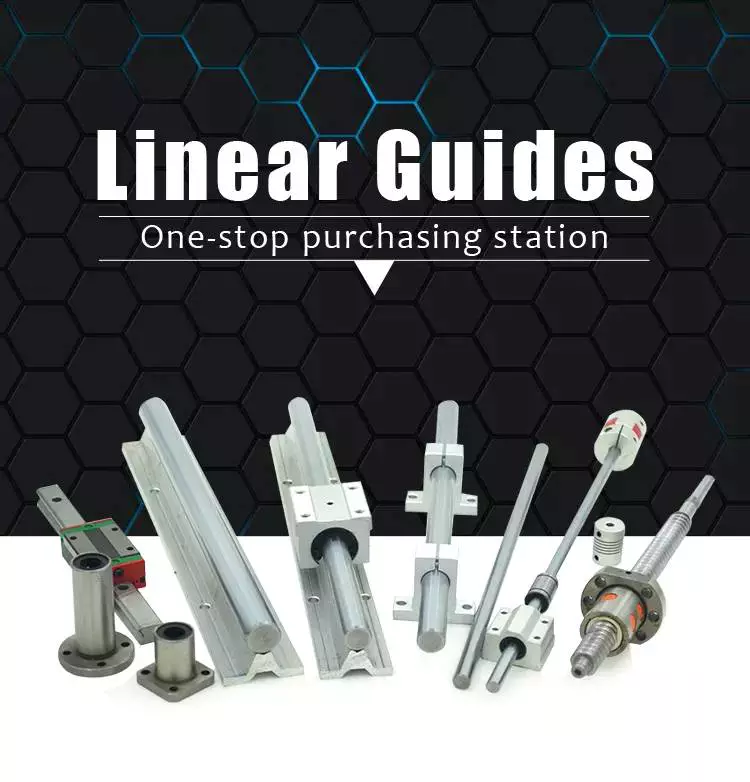
Dovetail rails
Several varieties of dovetail rails are available in the market. Among them are the standard boxway rails and a more specialized variant. These rails are known for their sleek and sturdy appearance and can handle even heavier loads than their counterparts.
The DS Series Compact Dovetail Linear Stages are the smallest of the lot, yet feature the same mechanism as the MT series dovetail stages. They slide along precision preloaded dovetail slides, making them a good choice for applications that require high performance, but limited space. These stages are also less prone to shock than their conventional counterparts.
The DS series dovetail stages are available in a variety of XYZ configurations, making them ideal for applications requiring the smoothest of motions and the least amount of vibration. These stages are also easy to integrate into your system thanks to their modular design. This is especially true in the case of the DS25 series, which has a lower footprint than the MT series.
The DS Series Compact Dovetail Stages are a step up from the MT series dovetail stages. This is thanks to their high-speed, precision preloaded dovetail slides. These are not only lightweight, but also silent, which is particularly useful in medical applications. These stages feature the aforementioned low-profile design, as well as thicker and more robust saddles. They are also available in two different travel ranges.
While dovetail rails on linear rails may be a good choice for your next project, you should consider some of the factors that can shorten its life. Some of the most common failures are abrasions, corrosion, and dust. You may also want to consider a platform to attach to your system’s moving component. This can allow you to increase the size of the transport area, while still keeping your load close at hand.
The DS Series Compact Dovetail line of dovetail stages are a good choice for applications that require the smoothest of motions and the least number of components. This is especially true in the case of DS series dovetail stages, which do not use typical roller bearings.
Sleeve-bearing slides
Depending on the application, there are different types of linear rail slides. The most common is the ball bearing slide, which uses two linear rows of ball bearings to move a carriage. The design offers smooth motion in a single direction.
Another type of slide is the dovetail slide. It involves a slot on the base of the slide and a protruding V-shaped tongue on the saddle. This design is more durable than other slides, and can be used for heavy load applications. However, it can’t handle as large a load as boxway slides, which involve a mating base and saddle.
A third type of slide is the cylindrical column slide. It is functionally similar to the square gib slide, but lacks the strength and stiffness of the latter. It’s usually more expensive and harder to assemble, although it offers a more accurate form of mechanical linear motion.
The inner surface of a linear sleeve bearing is usually made up of a journal slide. It’s a common way to reduce friction through surface coating. Some of these slides are made from CZPT, a material that’s inert to acids and solvents. It’s also designed to work in varying environments.
There are several types of bushings, and each can be made from a wide range of alloys. Bronze bushings are designed for a smooth motion, while plastic bushings are suited for low-speed applications.
For applications requiring high-speed operation, linear sleeve bearings can be manufactured in ceramic rolling elements. These offer less noise and better distribution of load.
Another type of linear rail slide is the box-way slide. It includes a mating base and saddle. It’s often used for heavy-duty applications. A third section can be attached to the saddle, extending the length of the slide. These slides offer a T-shaped profile when fitted.
The square gib design is an excellent choice for heavy-duty applications. It offers accurate linear movement and high load capacity. It can be milled, drilled, or tapped. It has low friction, and can withstand force in any direction.
The CZPT design has excellent performance in both smooth and harsh environments. It’s also long, making it ideal for large installations.
Sliding contact guides
Choosing a sliding contact guide on linear rail can be tricky. With a variety of options available, it’s important to understand the differences between them and the advantages they provide.
The first of these is the material used. Stainless steel, aluminum, or cast iron are common materials for sliding guides. These materials are durable and will withstand heavy loads. They can also be used in corrosive environments.
The other important factor is the lubrication method. The amount of lubrication required is largely determined by the type of linear slide and the type of bearings it uses. Ball bearing slides typically need less lubrication than linear bearing slides. The lubrication method is also important because it reduces the friction that leads to wear.
The most important thing about the lubrication method is that it should be easy to access and clean. This can ensure that you get the best performance out of your linear guide. You may also choose to upgrade the lubrication to increase the lifetime of your guide.
Another important factor is the size of the application. A larger capacity will allow the guide to carry a heavier load. You can also choose a higher speed guide if the application involves high speeds. The length of the guide should also be considered. The length is usually dictated by the size of the application. You can also customize the length of your guide by contacting your nearest sales office.
The biggest difference between sliding contact guides on linear rail and other linear guides is the amount of friction. The more force you apply, the higher the coefficient of friction will be. Therefore, this type of guide is not suitable for high speed applications.
The first recirculation ball was developed by Thomson Linear. This was the first commercialized rolling element. The ball has a much lower coefficient of friction than a roller. This is why it is often used in motion control applications.
A high speed operation will require more lubrication than a low speed operation. The E-DFO coating of the lubricant reportedly has a longer life than fluororesin coating.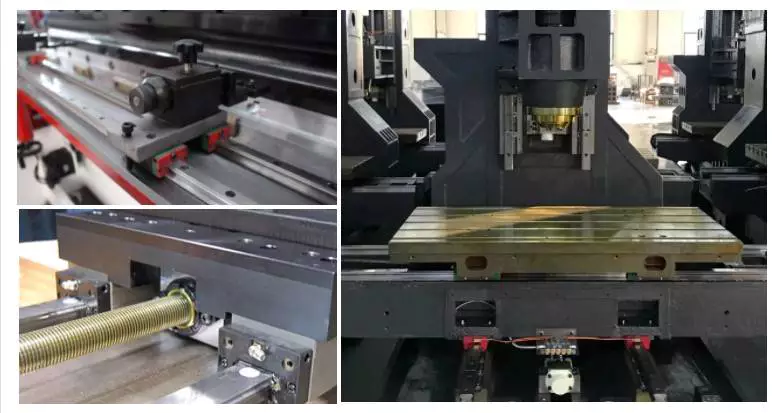
Box way rails
Unlike the conventional linear guideways which consist of a thin film of lubricating oil between them, the box way rails run under sliding friction. The box way systems are made of a tough material, such as steel. They are capable of handling heavier loads than the dovetail rails. They are also better at absorbing shock loads. However, their service life is shorter than that of linear rails. The linear guideway VMCs are often two or three times faster than the boxy counterparts.
The most common material used in linear guideways is steel. It is usually manufactured with high precision. It is then graded for a specific application. The bearing plates have smooth transitions and can carry increasing loads as they become convex. This design makes it ideal for machining steel.
While the linear rail has a higher carrying capacity, the box way system is still relatively small. The box ways can handle higher loads than dovetail rails. However, they cannot handle a high running speed. They are also considered to be better at reducing chatter.
The main components of a linear slide are the main carriage and bearings. They incorporate power screws and ball bearings. The main difference between the two is that the ball bearings have rolling elements that can reduce friction. The rolling element bearings also have high sensitivity. The friction between the rolling element and the rail is also low.
Box ways also have a better vibration dampening capability. However, they are not ideal for consumer applications. They are also much more expensive than the linear guideways. The cost is offset by the fact that they require less maintenance. It is therefore recommended that box way systems are used in heavy-duty applications.
Linear rails are a convenient alternative to box-way rails. However, they must be fully supported in assembly. They also require more lubrication. In addition, they can be damaged by water and other solvents. They also need to be protected during shipment.
Box ways are used in some larger machines, while the linear slides are used in smaller machines. These types of rails are generally used by machining centers that make part products. They can also be used in roughing machine tools.

editor by czh 2022-12-22